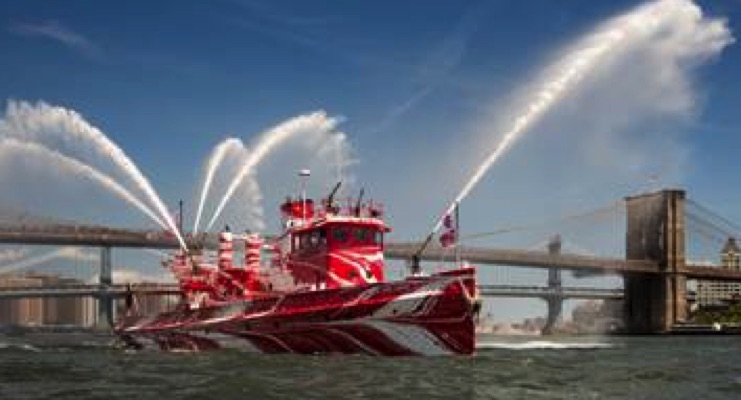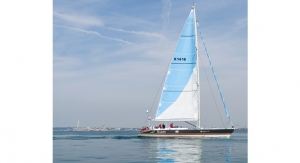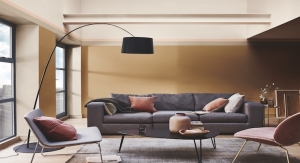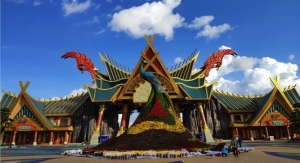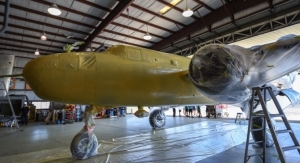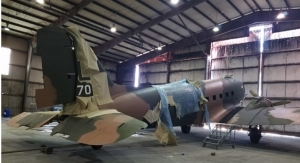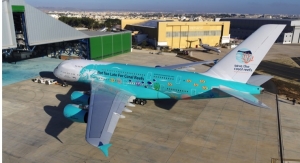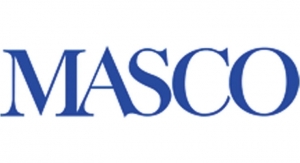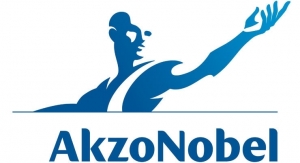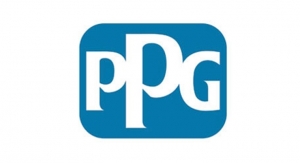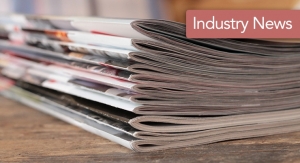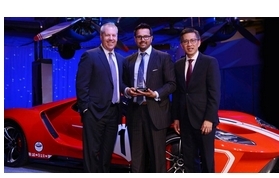07.27.18
Public Art Fund and 14-18 NOW are currently presenting Flow Separation, a new exhibition by New York-based artist Tauba Auerbach in which the historic Fireboat John J. Harvey was painted in a contemporary "dazzle camouflage" pattern. AkzoNobel supplied the paint for this project. The exhibition coincides with the end of the World War I Centennial on Nov. 11, 2018.
Throughout the summer and fall, the dazzled fireboat will be anchored at various docks around New York Harbor and on weekends will offer free, timed trips for the public, continuing John J. Harvey’s 18-year tradition since her retirement as a working fireboat.
“At AkzoNobel, we are passionate about paint. We are proud to support this unique project with our ‘International’ brand paint and see dazzling patterns in red and white come to life on the John J. Harvey,” says Chuck Hampton, AkzoNobel’s Regional Business Director, Marine & Protective Coatings North America. “The artful beautification of this historic fireboat thanks to the talented Tauba Auerbach has created a unique exhibition in which the public can now experience this vessel in a re-imagined way.”
Auerbach’s work draws inspiration from the unlikely vibrant camouflage designs painted on ships that crossed the Atlantic during World War I. Developed by British painter Norman Wilkinson, the designs were characterized by bold, high-contrast patterns that would distort the ships, confusing enemy submarines tracking their distance, direction and speed.
Taking cues from both animal camouflage and avant-garde movements such as Cubism, Futurism and Vorticism, the geometric forms inspired generations of abstract artists that followed. For Auerbach’s contemporary design, the exterior of the fireboat is painted with two patterns that the artist generated through the intricate process of marbling paper. Treating this decorative art as a visualization of the physics of “fluid dynamics,” Auerbach’s dazzle incorporates the movement and behavior of water into its design. Maintaining the John J. Harvey’s red and white palette, Flow Separation is foregrounding the history of dazzle’s emphasis on confusing as opposed to hiding.
This is Auerbach’s first major public art commission and the first time Public Art Fund has partnered with a boat to realize a new exhibition.
The work is co-commissioned by Public Art Fund, New York City’s leading presenter of dynamic outdoor art free of charge to the public, and 14-18 NOW, the United Kingdom’s award-winning public arts program commemorating the centenary of World War I. Since 2014, 14-18 NOW has commissioned new work by more than 200 leading contemporary artists across all art forms, including the presentation of four Dazzle Ships throughout the U.K. Auerbach’s dazzled vessel, is the first U.S.-based ship and the final vessel in the series before the 100th anniversary of the end of World War I on Nov. 11, 2018.
Tauba Auerbach works across various mediums, including painting, photography, sculpture, language and more, playing with material, form, color, perception, typography, and systems. As a former sign painter, she has an enduring interest in the histories, traditions and technologies of painting, continuing to use them in new ways. Over the past five years, she has investigated ornamental archetypes and has observed and catalogued these designs in pre-historic paintings, architecture, and textiles, as well as in snapshots of dynamic motion, in the form of rivers and on the skeletons of coral. With Flow Separation, Auerbach expands on this interest, drawing inspiration from the rhythmic designs found in the wake patterns left behind objects moving through water.
Auerbach created the design through the laborious and gestural process of marbling — floating inks on a fluid bath and dragging various combs through them before transferring them on to paper — resulting in a design that has innumerable unique variables. Auerbach densely and meticulously painted the surfaces of the Fireboat John J. Harvey including the deck, hull, and doors, with two red and white marbled patterns flowing in opposite directions, creating a one-of-a-kind, dynamic motif.
Artist Tauba Auerbach said, "With Flow Separation, I didn't want to ignore the John J. Harvey's identity, so I took the boat's usual paint job and scrambled it. Dragged a comb through it. The palette also exaggerates the fact that ‘dazzle’ was more about confusing and outsmarting than about hiding. I like those instances where cleverness is an antidote to brute force."
Visitors will be able to experience the new commission in a number of ways across the city. From July through late September, the John J. Harvey will be docked at two locations: Brooklyn Bridge Park’s Pier 6 and Hudson River Park’s Pier 25. On weekends, the public will be able to board the boat to experience the dazzled design up close, and free timed trips around different parts of New York Harbor from each location will be offered, creating a special experience with a contemporary artwork and historic vessel.
During the winter and spring months, the boat will be docked at its home location at Hudson River Park’s Pier 66a in Chelsea and will act as a floating sculpture that the public may view from land or water. Visitors can reserve tickets online. For more information about locations and to reserve tickets, visit PublicArtFund.org.
Flow Separation is co-commissioned by Public Art Fund and 14-18 NOW: WWI Centenary Art Commissions, part of the Dazzle Ship series co-commissioned with Liverpool Biennial and supported by Bloomberg Philanthropies.
Throughout the summer and fall, the dazzled fireboat will be anchored at various docks around New York Harbor and on weekends will offer free, timed trips for the public, continuing John J. Harvey’s 18-year tradition since her retirement as a working fireboat.
“At AkzoNobel, we are passionate about paint. We are proud to support this unique project with our ‘International’ brand paint and see dazzling patterns in red and white come to life on the John J. Harvey,” says Chuck Hampton, AkzoNobel’s Regional Business Director, Marine & Protective Coatings North America. “The artful beautification of this historic fireboat thanks to the talented Tauba Auerbach has created a unique exhibition in which the public can now experience this vessel in a re-imagined way.”
Auerbach’s work draws inspiration from the unlikely vibrant camouflage designs painted on ships that crossed the Atlantic during World War I. Developed by British painter Norman Wilkinson, the designs were characterized by bold, high-contrast patterns that would distort the ships, confusing enemy submarines tracking their distance, direction and speed.
Taking cues from both animal camouflage and avant-garde movements such as Cubism, Futurism and Vorticism, the geometric forms inspired generations of abstract artists that followed. For Auerbach’s contemporary design, the exterior of the fireboat is painted with two patterns that the artist generated through the intricate process of marbling paper. Treating this decorative art as a visualization of the physics of “fluid dynamics,” Auerbach’s dazzle incorporates the movement and behavior of water into its design. Maintaining the John J. Harvey’s red and white palette, Flow Separation is foregrounding the history of dazzle’s emphasis on confusing as opposed to hiding.
This is Auerbach’s first major public art commission and the first time Public Art Fund has partnered with a boat to realize a new exhibition.
The work is co-commissioned by Public Art Fund, New York City’s leading presenter of dynamic outdoor art free of charge to the public, and 14-18 NOW, the United Kingdom’s award-winning public arts program commemorating the centenary of World War I. Since 2014, 14-18 NOW has commissioned new work by more than 200 leading contemporary artists across all art forms, including the presentation of four Dazzle Ships throughout the U.K. Auerbach’s dazzled vessel, is the first U.S.-based ship and the final vessel in the series before the 100th anniversary of the end of World War I on Nov. 11, 2018.
Tauba Auerbach works across various mediums, including painting, photography, sculpture, language and more, playing with material, form, color, perception, typography, and systems. As a former sign painter, she has an enduring interest in the histories, traditions and technologies of painting, continuing to use them in new ways. Over the past five years, she has investigated ornamental archetypes and has observed and catalogued these designs in pre-historic paintings, architecture, and textiles, as well as in snapshots of dynamic motion, in the form of rivers and on the skeletons of coral. With Flow Separation, Auerbach expands on this interest, drawing inspiration from the rhythmic designs found in the wake patterns left behind objects moving through water.
Auerbach created the design through the laborious and gestural process of marbling — floating inks on a fluid bath and dragging various combs through them before transferring them on to paper — resulting in a design that has innumerable unique variables. Auerbach densely and meticulously painted the surfaces of the Fireboat John J. Harvey including the deck, hull, and doors, with two red and white marbled patterns flowing in opposite directions, creating a one-of-a-kind, dynamic motif.
Artist Tauba Auerbach said, "With Flow Separation, I didn't want to ignore the John J. Harvey's identity, so I took the boat's usual paint job and scrambled it. Dragged a comb through it. The palette also exaggerates the fact that ‘dazzle’ was more about confusing and outsmarting than about hiding. I like those instances where cleverness is an antidote to brute force."
Visitors will be able to experience the new commission in a number of ways across the city. From July through late September, the John J. Harvey will be docked at two locations: Brooklyn Bridge Park’s Pier 6 and Hudson River Park’s Pier 25. On weekends, the public will be able to board the boat to experience the dazzled design up close, and free timed trips around different parts of New York Harbor from each location will be offered, creating a special experience with a contemporary artwork and historic vessel.
During the winter and spring months, the boat will be docked at its home location at Hudson River Park’s Pier 66a in Chelsea and will act as a floating sculpture that the public may view from land or water. Visitors can reserve tickets online. For more information about locations and to reserve tickets, visit PublicArtFund.org.
Flow Separation is co-commissioned by Public Art Fund and 14-18 NOW: WWI Centenary Art Commissions, part of the Dazzle Ship series co-commissioned with Liverpool Biennial and supported by Bloomberg Philanthropies.

